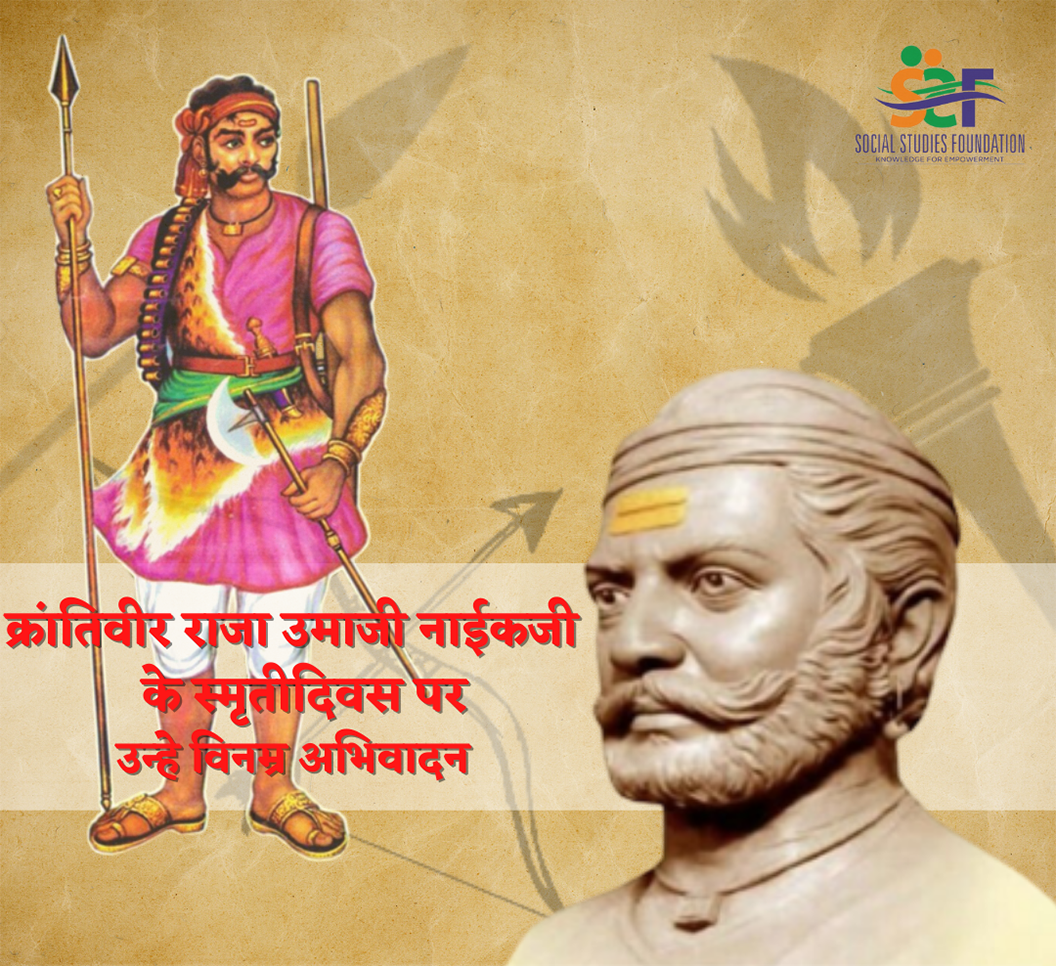According to our school textbooks and the traditional history books the revolt of 1857 is the first war of Indian Independence. But, prior to the revolt of 1857 there were many freedom fighters who accepted martyrdom in order to free our motherland from the clutches of foreign rule. Among such many freedom fighters, there is one unsung hero from our freedom struggle who deserves a special mention. His name is Umaji Naik. His real name was Umaji Khomane. In Marathi language naik means leader.
Umaji Naik was born on 7 September in Bhivadi village of Maharashtra. Today Bhivadi is in Pune district. Umaji Naik belonged to the Ramoshi tribe. It is said that they migrated from today’s Telangana to Maharashtra. Ramoshi tribe was the fighter class in the army of Marathas. As Ramoshis were the fighter class, they were given the responsibility of safeguarding the Maratha forts. Umaji’s father Dadaji Khomane was the custodian of purandar fort. Under his father’s supervision Umaji learned various self- defence techniques like handling axe archery, javelin throwing, and many more. It will not be an exaggeration to say that he was unknowingly preparing himself to be the valiant freedom fighter. He was also the devotee of lord Khandoba.
Everything was going well for the Ramoshis till the British intervention. After subjugating Peshwas Britishers ordered them to exclude the Ramoshi from the army. This came as major blow for them as they turned unemployed within fraction of seconds. In retaliation to this act of Britishers, Umaji started armed resistance against them. He started looting those wealthy landlords who supported brtiishers. During this turmoil he got caught by Britishers and was sentenced to 7 years of jail.
Umaji, refused to give up against Britishers and utilize this period of his imprisonment to educate himself. After completing the period of his imprisonment, he accelerated his protest with double force.
In the year 1825, Umaji with his loyal soldiers looted the British arsenal near Bhamburda. This was first great move from him. Frustrated Britishers issued the price money for the one who will help them to catch Umaji. To the eternal surprise of Britishers, Umaji answered this with the loot of villages kikavi, parinche, saswad and jejeuri. This time Britishers increased the price money to 1200rs. But looking at Umaji’s efforts, people from rural area started supporting him in his work. Around 13 villages gave the annual tax to Umaji instead of Britishers. This came as a blow to the military might of Britishers. But they were aware of this fact that it was difficult to capture them in actual face to face battle. Cunning Britishers captured Umaji’s family members and made him surrender. To everyone’s surprise they did not kill Umaji. Instead, they made him work for them. But Umaji being a true son of soil didn’t stop his protest and manage to get out their subjugation.
Alexander Mackintosh was appointed by the British government to capture the Umaji. Pune Collector George Gilburn issued a manifesto against the Umaji on 26 January, 1831 and again lured the public with money, but no one complained against Umaji. He then issued his manifesto against the British government (16 February, 1831). This manifesto is also known as the ‘Independence Manifesto’. In this manifesto Umaji advices the common public to not to co-operate with Europeans and specially britishers. The soldiers in the army of Britishers were advised to defy the orders of their british masters. Those people whose land had confiscated by the britishers were advised to join the Umaji’s armed revolt and no village should pay revenue to the British, otherwise those villages would be destroyed.
It was mentioned that Umaji has issued this manifesto for all of India. The concept of whole India as one country or one nation is seen in this. It also included Hindu-Muslim kings, Sardars, Zamindars, Vatandars.
After this declaration, Umaji issued a leaflet addressed to ‘All Gadkari Naiks’ and called for a revolt against the British. The former and his accomplices literally created havoc in Kolhapur, Solapur, Sangali, Satara, Pune and Marathwada. Many British officers were appointed to settle them. On August 8, 1831, the Britishers issued another proclamation offering more money and 400 bighas of land. Umaji’s two companions, Kalu and Nana, fell victim to this bait. He himself captured Umaji on 15 December, 1831 and handed it over to the British. Umaji was then hanged by the British on 3 February, 1834 at Pune. It was the first revolutionary effort by the grassroots against the British rule in Maharashtra in the early nineteenth century.
Rushikesh Bhalerao



